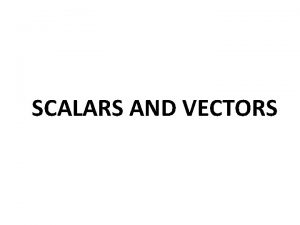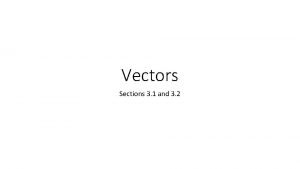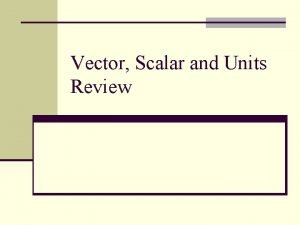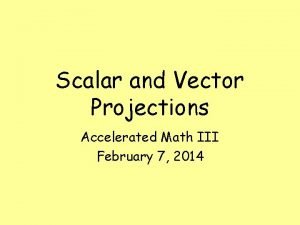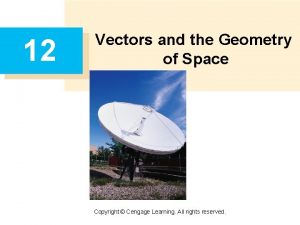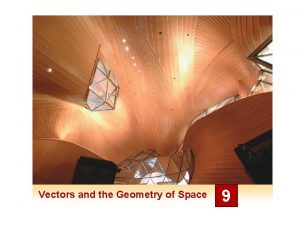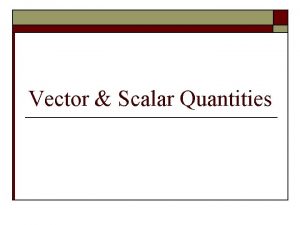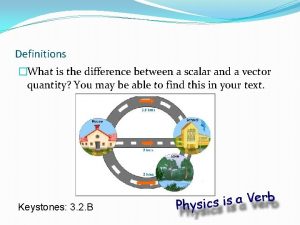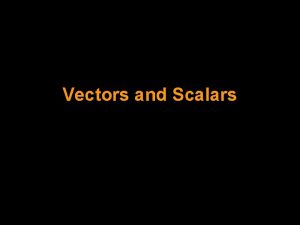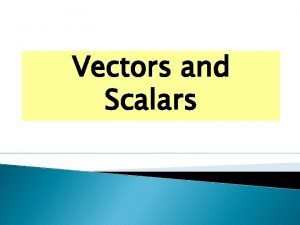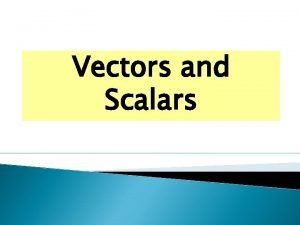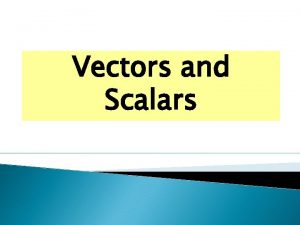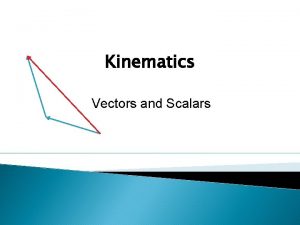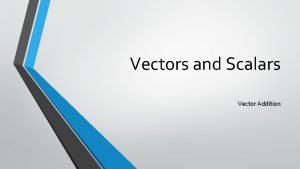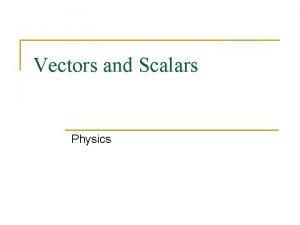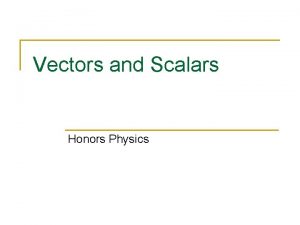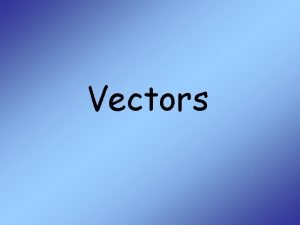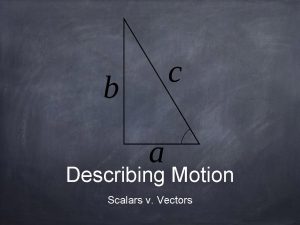SCALARS AND VECTORS SCALARS AND VECTORS Scalar is















- Slides: 15

SCALARS AND VECTORS

SCALARS AND VECTORS • Scalar is a simple physical quantity that is not changed by coordinate system rotations or translations. • Expressing a scalar quantity we give it simply with a number and a unit (for example, 12 kg). • If a quantity has both a magnitude and direction, it is called a vector.

SCALARS AND VECTORS Scalars (magnitude) Vectors (magnitude+direction) Speed Velocity Temperature Acceleration Distance Displacement Area Force Entropy Momentum Volume The electric field intensity Etc

Vectors • Vectors are equal when they have the same magnitude and direction, irrespective of their point of origin. A A A

SUM OF TWO VECTORS C= A + B A B B If two vectors have the same direction, their resultant has a magnitude equal to the sum of their magnitudes and will also have the same direction.

SUM OF TWO VECTORS C= A + B A B B If two vectors have the opposite direction, their resultant has a magnitude equal to the subtraction of their magnitudes; direction of the sum is equivalent to the direction of longer vector (to the bigger magnitude).

SUM OF TWO VECTORS BY A GRAPHICAL METHOD B A B + A C= B Two vectors A and B are added by drawing the arrows which represent the vectors in such a way that the initial point of B is on the terminal point of A. The resultant C = A + B, is the vector from the initial point of A to the terminal point of B.

Polygon method

Parallelogram method In the parallelogram method for vector addition, the vectors are translated, (i. e. , moved) to a common origin. The resultant R is the diagonal of the parallelogram drawn from the common origin.

Method of components • The components of a vector are those vectors which, when added together, give the original vector. • The sum of the components of two vectors is equal to the sum of these two vectors.

Rectangular components • In all vector problems a natural system of axes presents itself. In many cases the axes are at right angles to one another. • Components parallel to the axes of a rectangular system of axes are called rectangular components. • In general it is convenient to call the horizontal axis X and the vertical axis Y. • The direction of a vector is given as an angle counter-clockwise from the X-axis.

Rectangular components •

Multiplication of vectors by positive scalar • Scalar multiplication of vector by a positive real number multiplies the magnitude of the vector without changing its direction. a 2 a 3 a

Multiplication of vectors by negative scalar • Scalar multiplication of vector by a negative real number multiplies the magnitude of the vector and changes its direction into opposite directions. a -2 a -3 a

Division of vectors by scalars • Scalar dividing of vector by a real number is equal to multiplication with reciprocal (or multiplicative inverse) of that number. a÷ 2 = ½ x a a b b÷(-3) = -1/3 x b
 Vectors and scalars in physics
Vectors and scalars in physics Vector trig
Vector trig Scalar and vector quantities
Scalar and vector quantities Entropy is scalar or vector
Entropy is scalar or vector Vectors form 3
Vectors form 3 Multiplying or dividing vectors by scalars results in:
Multiplying or dividing vectors by scalars results in: Is mass a vector or scalar
Is mass a vector or scalar Scalar product of vectors
Scalar product of vectors Prasanna balaprakash
Prasanna balaprakash Difference between scalar and vector
Difference between scalar and vector Scalar vs vector projection
Scalar vs vector projection Why speed is a scalar quantity
Why speed is a scalar quantity Dot product
Dot product Dot product
Dot product Scalar quantity characteristics
Scalar quantity characteristics Scalar and vector quantity difference
Scalar and vector quantity difference



